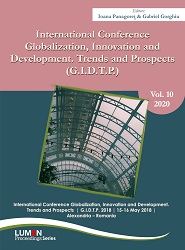New Genotypes of Castor Bean (Ricinus Communis L.) Productivity and Adaptability under Environmental Conditions in Southern Romania
New Genotypes of Castor Bean (Ricinus Communis L.) Productivity and Adaptability under Environmental Conditions in Southern Romania
Author(s): Rodica Sturzu, Cristina Meluca, Sorina Cernat
Subject(s): Business Economy / Management, Agriculture
Published by: Editura Lumen, Asociatia Lumen
Keywords: castor bean; yields; variability coefficient; correlations;
Summary/Abstract: This paper’s aim is to identify new castor bean genotypes created at Agricultural Research and Development Station Teleorman in Southern Romania, with an improved productivity and adaptability to the area’s environmental conditions. The study has dealt with 15 castor bean genotypes during three years’ time (2013-2015). The experiment was made according to the fully randomized block method, in three replications. The results of the variance analysis have shown that there was a significant difference between the castor bean genotypes regarding the grain yield. The three years’ average yield has shown that both lines T 647/02 (2711 kg/ha) and T 2410 (2529 kg/ha) and the varieties Rivlas (2701 kg/ha) and Dragon (2451 kg/ha) have registered the highest productions, with significant production supplies (623-883 kg/ha) compare to the control variety Cristian (1828 kg/ha). The crops stability was estimated by the means of the variability coefficient. The correlations analysis showed that there are strong relationships between productions and productivity elements: the seeds’ weight per primary raceme (r=0,992), the capsules’ weight per primary raceme (r=0,925) and the number of seeds per primary raceme (r=0,841), as well as between the productivity elements: the capsules’ weight and the seeds’ weight per primary raceme (r=0,929), the weight and the number of seeds per primary raceme (r=0,832), the capsules’ weight and the number of seeds per primary raceme (r=0,736). Also, there are significant positive correlations between the plant’s height with the insertion height of the primary raceme (r=0,625) and the primary raceme length (r=0,625). There is a significant negative correlation between number of seeds per primary raceme and weight of a thousand seeds (r=0,586). The results achieved in the study suggest that the castor genotypes are productive and adapted to the weather conditions in South Romania, recommended to be grown in this agricultural area.
- Page Range: 395-406
- Page Count: 11
- Publication Year: 2020
- Language: English
- Content File-PDF

